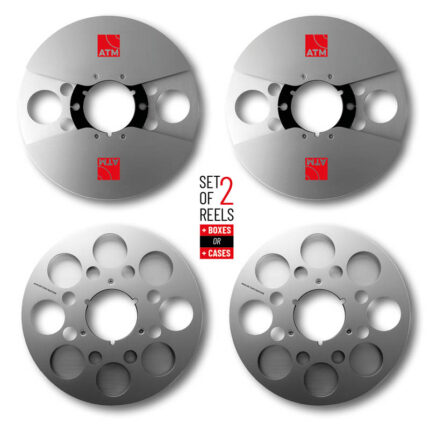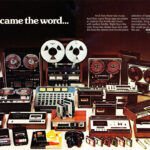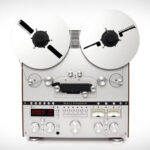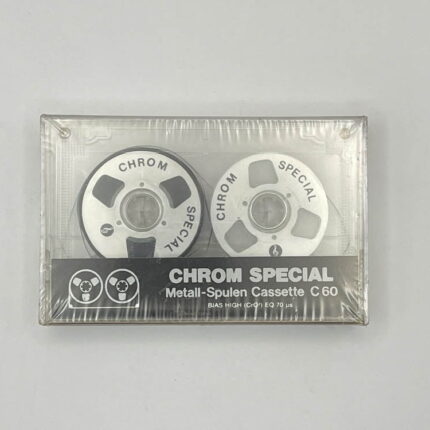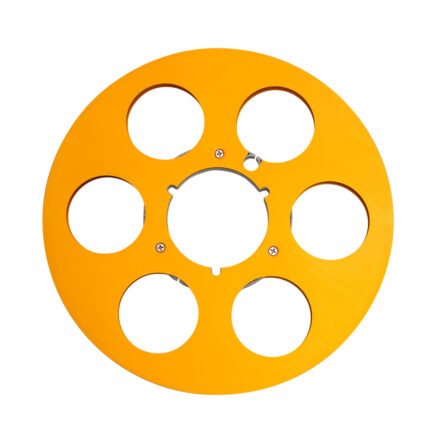When it comes to music consumption, we don’t often think about the technology behind it. Yet, music formats and devices have changed significantly over the years, and one inventor who played a pivotal role in this progression was Lodewijk Frederik Ottens, the audio cassette inventor.
His invention revolutionized the way music was recorded and shared, popularizing the cassette tape format and achieving lasting impact. In this article, we will explore Ottens’ life, his contributions, and his influence on the music industry.
Join us as we delve into the life and legacy of the remarkable inventor audio cassette, Lodewijk Frederik Ottens.
Early Life and Background
Lodewijk Frederik Ottens, the inventor of the audio cassette, was born on June 21, 1926, in Bellingwolde, a small village in the Netherlands. During his childhood, Ottens demonstrated a keen interest in technology and electronics, tinkering with radios and electric motors in his spare time.
After completing his education at a technical school in Groningen, Ottens served in the Dutch army during World War II. Following the war, he joined the Phillips Research Laboratories in Eindhoven, where he conducted experiments and research into magnetic recording technology.
It was here that Ottens would eventually come up with the idea for the audio cassette, which would go on to revolutionize the way that music was consumed and recorded.
Otten’s early-life experiences and technical education played a crucial role in his development as an inventor, laying the groundwork for the many innovative breakthroughs he would go on to achieve in the fields of music and technology.
The Birth of the Audio Cassette
In the early 1960s, Lodewijk Frederik Ottens recognized the need for a more compact and portable music format. Traditional reel-to-reel tapes were bulky and difficult to carry, limiting their potential for widespread use.
Ottens led a team of engineers and designers at Philips, a Dutch technology company, to develop a new format that could address these limitations. The result was the audio cassette, a compact and lightweight tape that could be played on small, portable cassette players.
The development of the audio cassette was not without its challenges. Ottens and his team had to overcome technical issues such as tape durability and audio quality, as well as logistical challenges like standardized tape length and manufacturing processes.
Despite the obstacles, Ottens’ invention had a significant impact on the world of music and recording. It allowed for greater ease in creating and sharing mixtapes and playlists, as well as the democratization of music, giving rise to a new era of independent artists and labels.
Revolutionizing Music Consumption
Lodewijk Frederik Ottens’ invention of the audio cassette revolutionized the way people consumed music. The audio cassette quickly gained popularity, becoming a dominant format that shaped the music industry for decades. Its portability and durability made it ideal for music lovers on the go, while its affordability made it accessible to a wider audience.
The rise of the cassette tape also ushered in a new era of mixtape culture, allowing people to create and share custom playlists for the first time. This sparked a creative explosion, with enthusiasts carefully selecting and arranging songs to craft the perfect mood or message.
Throughout the 1970s and 1980s, cassette tapes dominated music sales, outselling vinyl records and eight-track cartridges. The format continued to evolve, with increasing emphasis on sound quality and the introduction of portable cassette players like the iconic Sony Walkman.
Thanks to the audio cassette, music lovers around the world enjoyed unprecedented access to their favorite artists and songs. Its impact on the music industry cannot be overstated, cementing Lodewijk Frederik Ottens’ legacy as a pioneer of modern music technology.
Advancements in Cassette Tape Technology
Lodewijk Frederik Ottens’ invention of the audio cassette was just the beginning. He and other inventors continued to improve the technology, making it more accessible and user-friendly.
One significant development was the introduction of portable cassette players, allowing people to listen to music on the go. This innovation helped establish cassette tapes as a dominant format, and their popularity only continued to grow.
Improvements in sound quality were also made, providing listeners with a richer, more immersive experience. Other innovations, such as automatic noise reduction and Dolby noise reduction, further propelled the popularity of the format.
Lodewijk Frederik Ottens’ contributions and improvements to cassette tape technology revolutionized the way people listened to music, and the impact of these advancements can still be felt today.
The Legacy of the Audio Cassette
The audio cassette, which was invented by Lodewijk Frederik Ottens, left a lasting impact on music consumption and technology development. One of the audio cassette’s most significant contributions was through popularizing mixtape culture. Mixtapes allowed people to create personalized playlists and share music with each other, igniting a new form of cultural expression and community building.
Additionally, the audio cassette played a vital role in preserving music and recordings. It allowed for easy duplication and distribution of music, making it accessible to a wider audience. The cassette tape also enabled the development of new music genres and subcultures by democratizing the process of music creation and distribution.
However, with the advent of digital formats such as CDs and MP3s, the audio cassette declined in popularity. Despite this, the audio cassette remains an enduring icon of 20th-century music culture and technology development that continues to inspire and influence contemporary creatives.
Ottens’ Contributions Beyond the Audio Cassette
While Lodewijk Frederik Ottens is best known as the inventor of the audio cassette, his contributions to technology extend far beyond this groundbreaking invention. Ottens’ career spanned several decades, during which he continued to innovate and bring new inventions to the world.
After the success of the audio cassette, Ottens went on to work on other projects in the field of audio technology. He played a significant role in the development of the compact disc (CD), which offered even higher audio quality and reliability than previous formats. This work earned him the esteemed Eduard Rhein Technology Award in 1986.
In addition to his work in audio technology, Ottens also contributed to the development of other technologies, including the digital video disc (DVD) and the recordable compact disc (CD-R).
Ottens’ legacy of innovation and ingenuity will continue to influence and shape technology for generations to come.
Conclusion
In conclusion, Lodewijk Frederik Ottens was a visionary inventor who revolutionized the world of music and technology with his creation of the audio cassette. His contributions to the field of music recording and consumption laid the foundation for many advancements that followed. Ottens’ innovation in cassette tape technology helped improve sound quality and make it more portable, leading to its widespread popularity and longevity.
The legacy of the audio cassette continues to be felt in contemporary culture, with mixtape culture and the preservation of music in physical formats still highly valued by many. While digital formats have now taken the lead, the audio cassette holds a special place in the hearts of music lovers.
While the focus of this article was on Ottens’ invention, it is worth noting his broader contributions to the field of technology across his career. His work in other areas of technology shows his continued pursuit of innovation and his legacy as a great inventor. Overall, Lodewijk Frederik Ottens’ impact on music and technology will be felt for generations to come.
FAQ
Who is Lodewijk Frederik Ottens?
Lodewijk Frederik Ottens (1926-2021) was a Dutch engineer and inventor who is credited with inventing the audio cassette. He made significant contributions to the field of music and technology.
What is the audio cassette?
The audio cassette is a magnetic tape recording format that was widely used for music playback and recording from the 1960s to the 1990s. It revolutionized the way music was consumed and shared.
How did Lodewijk Frederik Ottens invent the audio cassette?
Lodewijk Frederik Ottens, along with his team at Philips, developed the audio cassette in the early 1960s. They miniaturized the existing reel-to-reel tape technology, creating a portable and compact cassette tape format.
What were the advancements in cassette tape technology?
Over time, cassette tape technology saw advancements in sound quality, with the introduction of Dolby noise reduction systems. Portable cassette players, commonly known as “boomboxes,” also became popular, allowing people to listen to music on the go.
How did the audio cassette revolutionize music consumption?
The audio cassette made music more accessible and portable for the masses. It allowed people to record and create their own mixtapes, share music with friends, and enjoy music in their cars and personal devices.
What is the legacy of the audio cassette?
The audio cassette had a profound impact on music and technology. It popularized the concept of creating custom playlists with mixtapes and contributed to the rise of home recording studios. While its popularity declined with the advent of digital formats, it remains an iconic symbol of an era.
What other contributions did Lodewijk Frederik Ottens make?
Apart from inventing the audio cassette, Lodewijk Frederik Ottens made other notable contributions throughout his career. He played a key role in the development of the compact disc (CD) and the development of the Blu-ray disc.
















